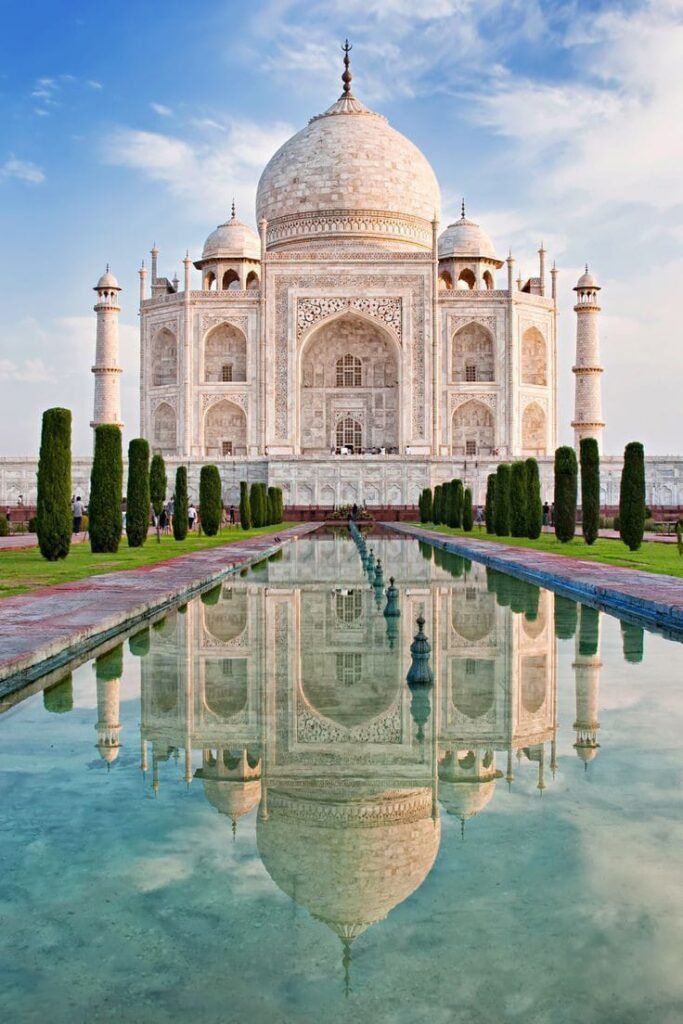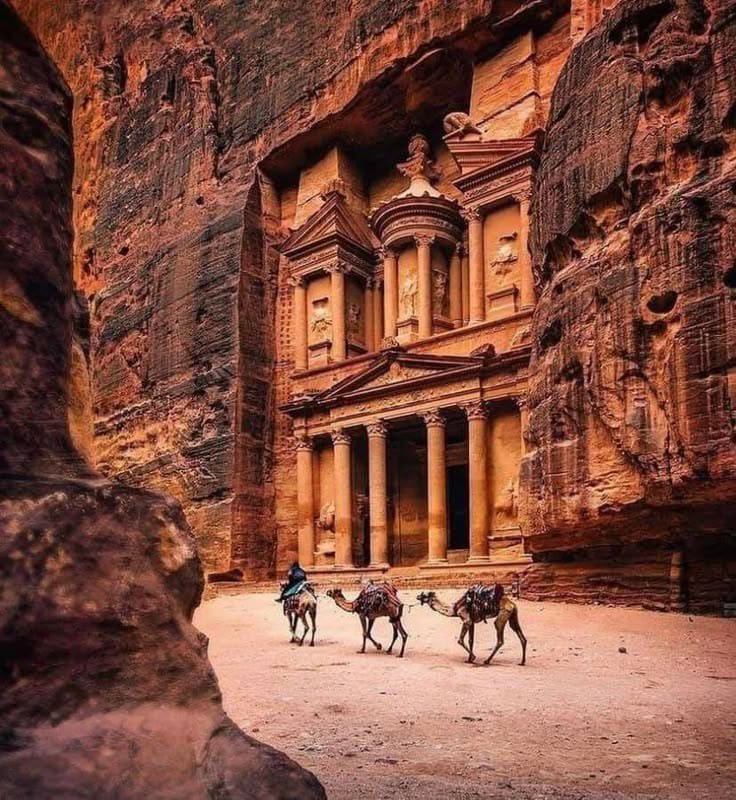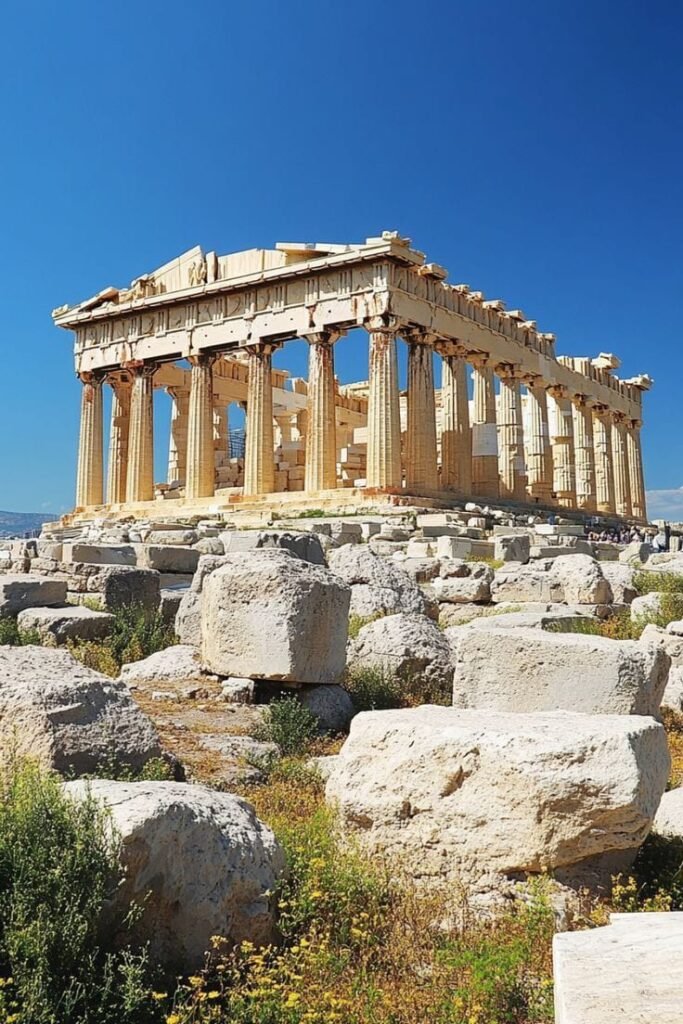Explore the world of historical landmarks with this deep blog that takes you through history and culture. As diverse as their ages, geography, and time are, these outstanding sites provide tremendous insight into the civilization that built them and the stories held within. Each place is a testament to the intellect, resilience, and artistry of people who worked on each site and reflects the values and beliefs of their era.
Then there’s the old age of Rome’s first Colosseum in its spectacular occasions where ancient Romans have flocked, not to be compared with breathtakingly lovely Machu Picchu natural beauty-witnessing the ingenuity of the Inca civilization. Come and see how Petra was carved into rose-red cliffs or the sprawling complex of Angkor Wat, a great symbol of the rich heritage of Cambodia. Each such a place is not just the story of remarkable craftsmanship but speaks of the cultural and historical narratives which defined our world. This blog not only reflects the historical importance of these landmarks but will also offer great tips on how to help them experience their beauty firsthand. Whether you are just an avid traveler, a history enthusiast, or someone just curious about the past, this tour of historical landmarks will inspire you to go see these incredible sites. Join us as we remember our ancestors and understand the message that huge achievement instills in us. Come along and find an appreciation for the tapestry of human history, which continues to influence our present and future.

Exploring Historical Landmarks: A Journey Through Time
Historical landmarks are windows in time that connect us to the histories, the narratives of people and cultures, which have formed our world. Ancient ruins; towering architectural marvels-every landmark holds its importance in the historical context in which it was written and goes beyond itself, providing a unique experience that enriches our understanding of history. We will unveil to you through this blog some of the most outstanding historical landmarks throughout the world along with the importance and the story that they unfold.

1. The Great Wall of China
The great embankment of China is the world-famous monument that goes through northern China for about 13,000 miles. Originally, this massive wall was designed to protect the country from invasion. Thus it stands a notable example of the resourcefulness and determination of one of the world’s oldest civilizations. It was started in the 7th century BC and at times went on for thousands of years, making millions of laborers work.
Importance
The Great Wall is not just a defensive line. Rather, it carries with it the tenacity and endurance of the Chinese people. Along its length, the visitor can take breathtaking shots of scenery of the surrounding landscapes and the lives of those who built it. There are sections that are different from one another but unique in each of their own features and historical stories.
Visitor Experience
Of course, the less crowded areas of the wall are often hiked for a more authentic experience. Local guides share the history of the wall as far as its construction is concerned and the practical uses of different watchtowers. The experience humbles yet inspires awe as people reflect on the monumental effort that went into this creation.

2. The Pyramids of Giza
The Pyramids of Giza, one of the most recognized and long-lasting symbols of ancient Egypt, are located just outside Cairo. One of the Seven Wonders of the Ancient World, the Great Pyramid, built for Pharaoh Khufu around 2580 BC, is also the only one to have survived relatively intact.
Significance
These pyramids were tombs for pharaohs; they justified the power and wealth owned by the rulers. The construction techniques used for building these pyramids were highly advanced with thousands of workers. In addition to these pyramids, the Sphinx which is a mythical creature with a lion’s body and human head has a very interesting history also accompanies this complex.
Visitor Experience
There are several ways of experiencing firsthand the greatness of the pyramids at Giza. For starters, visitors can visit the tombs and see ancient hieroglyphics. Guide tours for visitors often contain information about various mysteries concerning the making of the pyramids and the people who lived during the time of ancient Egyptians. Visitors can also ride camels through the pyramids as part of experiencing a more authentic historical experience of this landmark.

3. Colosseum
The Flavian Amphitheatre, by the Roman Empire, is the other name of the Colosseum located in Rome. Completed in AD 80, this massive arena was capable of seating 80,000 people who went there to view gladiatorial battles, public spectacles, and other plays.
Importance
The Colosseum is the best epitome of what one calls great Roman engineering and entertainment, symbolizing cultural importance for ancient Rome. It reminds people of the power of the empire, intricate social dynamics by then, and interactions between different classes of society.
Visit Experience
Today, tourists can tour the remnants of the Colosseum, with access to underground areas where the gladiators and animals were held before they were brought up for battle. Guided tours frequently incorporate the Roman Forum and Palatine Hill for a comprehensive appreciation of the design and historical background of the ancient city. Themed activities include historical reenactment in the Colosseum, during which the past is ensured to be experienced by you.

4. Machu Picchu
Machu Picchu is one of the most famous archaeological sites in the world, situated in the Andes Mountains in Peru. Machu Picchu was constructed in the 15th century as an estate for the Inca Emperor Pachacuti. The city had been long lost until rediscovered during the early years of the 20th century.
Significance
Machu Picchu is a testimony to the architectural wizardry of the Inca civilization and their deep love for nature. The place abounds with stonework details, crop circles, and temples, well represented in harmony with the landscape. It symbolizes the advanced engineering skill of Incas and their ability to thrive amidst challenging environments.
Visiting Experience
Then, one can take a hike on the Inca Trail to Machu Picchu. People can observe the mountainous scenery and the parts of ancient ruins while trekking to the historical site. Once reached Machu Picchu, visitors can see the well-preserved structures and get the idea behind the history and culture of the Incas. Sunrise at Machu Picchu is breathtaking as it witnesses morning light stroking upon the remnants.

5. The Taj Mahal
In the land of Agra, India, sits this wonder-the Taj Mahal-a UNESCO World Heritage Site and one of the world’s most famous architectural achievements. It was a mausoleum built by Mughal Emperor Shah Jahan as an ode to his beloved wife, Mumtaz Mahal.
Combining various aspects of Persian, Islamic, and Indian architectures, this majestic mausoleum is epitomized well in death, bonding its beauty in the hearts of the people forever.
While it is symbolic of love, Taj Mahal is the epitome of the artistic and architectural excellence of the Mughal Empire; it’s that the intricate marble inlay work, ornate gardens, and reflective pools make this place feel serene with visits from millions of people every year.
Visitor Experience
The tourist can go in for the grand entry, gardens, and tomb of the Taj Mahal with its breathtaking symmetry and designs. Guided tours often include Shah Jahan and Mumtaz Mahal stories, giving the visit a personal touch. Tourist also seek to have the dawn of day, at an early morning time, be still quiet yet amaze with the sun rising over the imposing dome.

6. Petra
Petra is carved out of the rose-red cliffs of southern Jordan and declared a UNESCO World Heritage Site and one of the New Seven Wonders of the World. It was established by the Nabataeans around the 5th century BC as a significant commercial center.
Importance
All this ingenuity is reflected in the persons of the great builders Petra, with the expert carvings of tombs, temples, and very elaborate water conduit systems, an architectural marvel and intricate facades, which express a number of cultural influences: Hellenistic, Roman, and Eastern traditions.
Experience for Visitors
The Siq is a narrow gorge that visitors walk through to access Petra, taking them past one of the most photographed buildings in the world: the Treasury. Petra exploration requires hiking through the archaeological site, where travelers may stumble upon hidden tombs, ancient theaters, and stunning viewpoints. Guided tours usually give a lot of information about Nabataean culture and the value of the site.

7. Angkor Wat
Angkor Wat, situated in Cambodia, is the largest religious monument in the world and a marvelous work of Khmer architecture. It was originally a Hindu temple devoted to the god Vishnu in the 12th century but then converted to a Buddhist temple.
Importance
It epitomizes the artistic and architectural prowess of the Khmer Empire. The intricate bas-reliefs and stunning architecture speak to the cultural and spiritual ethos of the time. The temple complex stands out as a symbol of Cambodian national pride and adorns the country’s flag.
Visitor Experience
The tour generally begins at dawn when the travelers visit the temple to enjoy the marvelous scenery at the breaking of the sun. A complex so enormous provides prospects of viewing various minor temples and remains, each possessing its specialty besides history. Local guides offer exceptional insights into the purpose of the site and the stories behind the art and architecture.

8. The Acropolis
This is the Acropolis of Athens, Greece, which has been an icon of ancient civilization and democracy. There are several historical structures, most prominently the Parthenon, in the citadel dedicated to the goddess Athena.
Importance
The Acropolis of Athens is a UNESCO World Heritage Site, and the preservation of the site shows the ability of ancient Athens in meeting the goals of societal greatness on cultural and political terms. The Acropolis proves the ingenuity of the people of Greece with their architectural features. At the same time, it is a testimony to the concept laid by them for art, philosophy, and democracy.
Visitor Experience
Walk around the Acropolis, considered the old heart of Athens. It is some of the most beautiful views of the city, perched atop a hill. Many guided tours elaborate on the history and significance of the structures.
Visit the nearby Acropolis Museum to learn more of the artifacts and history of this breathtaking site.

Conclusion
Historical landmarks go far beyond the structures themselves; they represent tangible connections to our past, with evidence of cultures, beliefs, and achievements that led into the present. Whether it is looking at the majesty of the Great Wall of China, the mystery of Machu Picchu, or the beauty of the Taj Mahal, such landmarks remind us of the richness of human history.
As we walk along these landmarks, we pay tribute, not only to the stories they carry but also ponder on our commonality as humans. Every single step on ancient stones and every story learned will help us appreciate the varied tapestry of history that helps shape our present and future. So whether you are going on a seasoned travel or planning your first adventure, take it to the point of always making it to explore these wonderful historical landmarks and find out the legacies they represent.






















+ There are no comments
Add yours